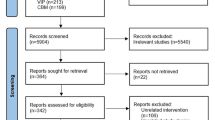Abstract
To determine whetherHelicobacter pylori has an effect on gastroduodenal mucosal prostaglandin generation, mucosal biopsies were obtained from the gastric body, antrum, and duodenal bulb of 30 patients who were undergoing upper gastrointestinal endoscopy for clinical indications. One biopsy from the gastric body and one from the antrum were tested for urease activity (urea broth) and one biopsy from each area including the duodenum was processed for histology. Two other biopsies form each area were incubated and the accumulation of prostaglandin E2 and 6-keto prostaglandin F1α in the incubation medium was measured by radioimmunoassay. Twelve of the 17H. pylori-positive patients and seven of the 13H. pylori-negative patients agreed to take bismuth subsalicylate (Pepto-Bismol) two tablets four times a day for four weeks. One week after treatment, these patients again underwent endoscopy and the above studies. This study indicates that: (1) mucosal PGE2 generation may be increased in the duodenum, gastric body, and antrum inH. pylori-positive patients compared toH. pylori-negative patients, and (2) treatment with bismuth subsalicylate for four weeks results in reduction of mucosal PGE2 in the duodenum, gastric body, and antrum ofH. pylori-positive patients and fails to eradicateH. pylori or reduce gastric inflammation.
Similar content being viewed by others
References
Rauws EAJ, Langenberg W, Houthoff HJ, et al:Campylobacter pyloridis-associated chronic active antral gastritis: A prospective study of its prevalence and the effects of antibacterial and antiulcer treatment. Gastroenterology 94:33–40, 1988
Hazell SL, Hennessy WB, Borody TJ, et al:Campylobacter pyloridis gastritis II: Distribution of bacteria and associated inflammation in the gastroduodenal environment. Am J Gastroenterol 82:297–301, 1987
Morris A, Nicholson G: Ingestion ofCampylobacter pyloridis causes gastritis and raised fasting gastric pH. Am J Gastroenterol 82:192–199, 1987
Humphreys H, Bourke S, Dooley C, et al: Effect of treatment onCampylobacter pylori in peptic disease: A randomized prospective trial. Gut 29:279–283, 1988
Marshall BJ, Goodwin CS, Warren JR, et al: Long term healing of gastritis and low duodenal ulcer relapse after eradication ofCampylobacter pyloridis: A prospective double-blind study. Gastroenterology 92:1518 (1987) (abstract)
Cliodna A, McNulty M, Gearty JC, et al:Campylobacter pyloridis and associated gastritis: Investigator blind, placebo controlled trial of bismuth salicylate and erythromycin ethylsuccinate. Br Med J 293:645–649, 1986
Robert A: Current history of cytoprotection. Prostaglandins 21 (suppl):89–96, 1981
Miller TA: Protective effects of prostaglandins against gastric mucosal damage: Current knowledge and proposed mechanisms. Am J Physiol 245:G601-G623, 1983
Cliodna A, McNuity M, Dent JC, et al: Detection ofCampylobacter pylori by the biopsy urease test: An assessment in 1445 patients. Gut 30:1058–1062, 1989
Burstein S, Hunter SA, Sedor C, et al: Prostaglandins and cannabis: 1X. Stimulation of prostaglandin E2 synthesis in human lung fibroblasts by Δ′-tetrahydrocannabinol. Biochem Pharmacol 31:236–237, 1982
Carrick J, Lee A, Hazell S, et al:Campylobacter pylori, duodenal ulcer, and gastric metaplasia: Possible role of functional heterotropic tissue in ulcerogenesis. Gut 30:790–797, 1989
Author information
Authors and Affiliations
Rights and permissions
About this article
Cite this article
Avunduk, C., Suliman, M., Gang, D. et al. Gastroduodenal mucosal prostaglandin generation in patients withHelicobacter pylori before and after treatment with bismuth subsalicylate. Digest Dis Sci 36, 431–434 (1991). https://doi.org/10.1007/BF01298870
Received:
Revised:
Accepted:
Issue Date:
DOI: https://doi.org/10.1007/BF01298870




